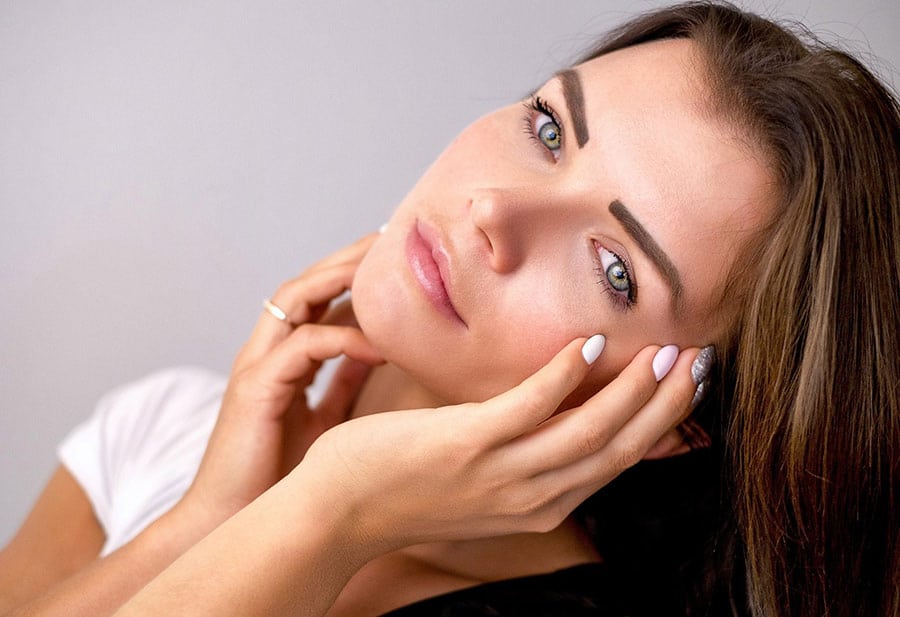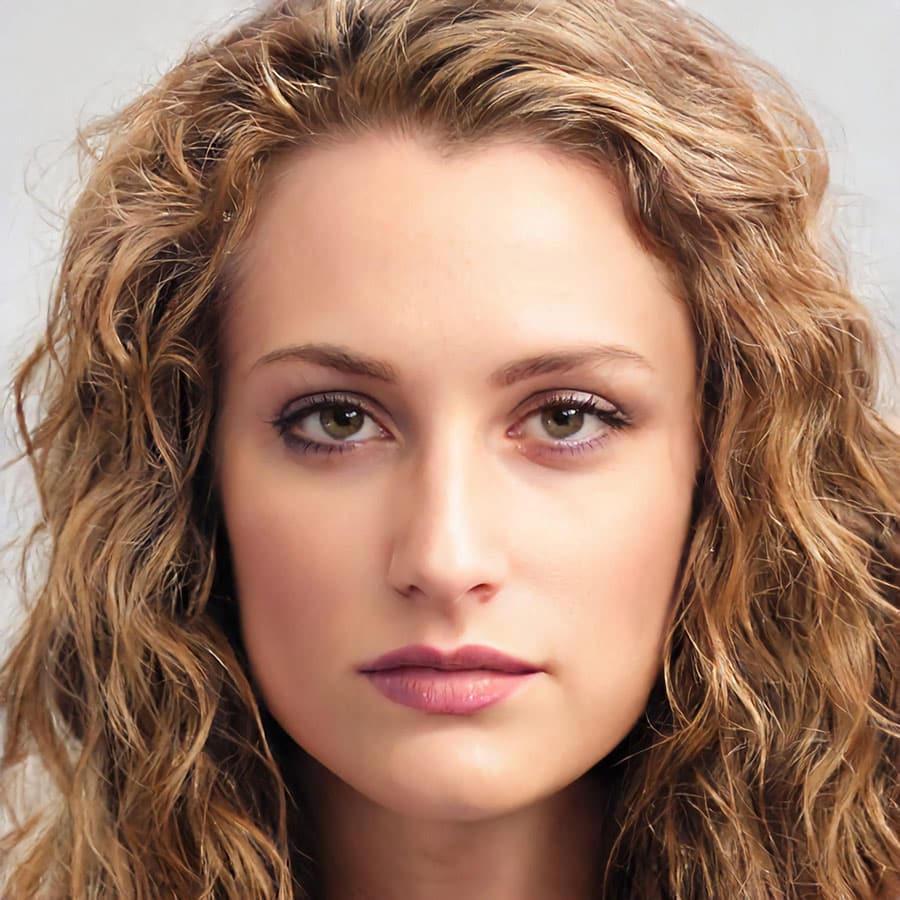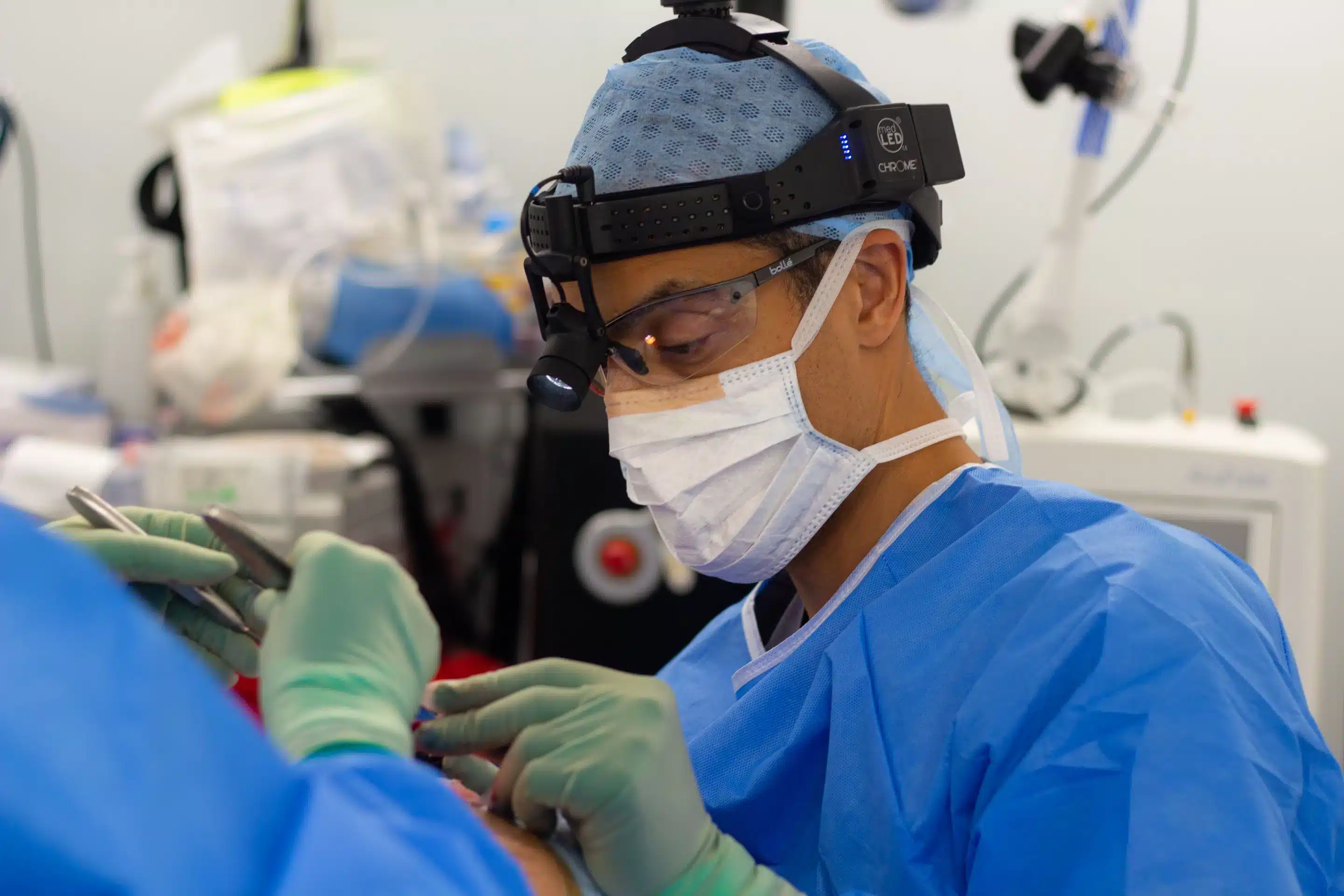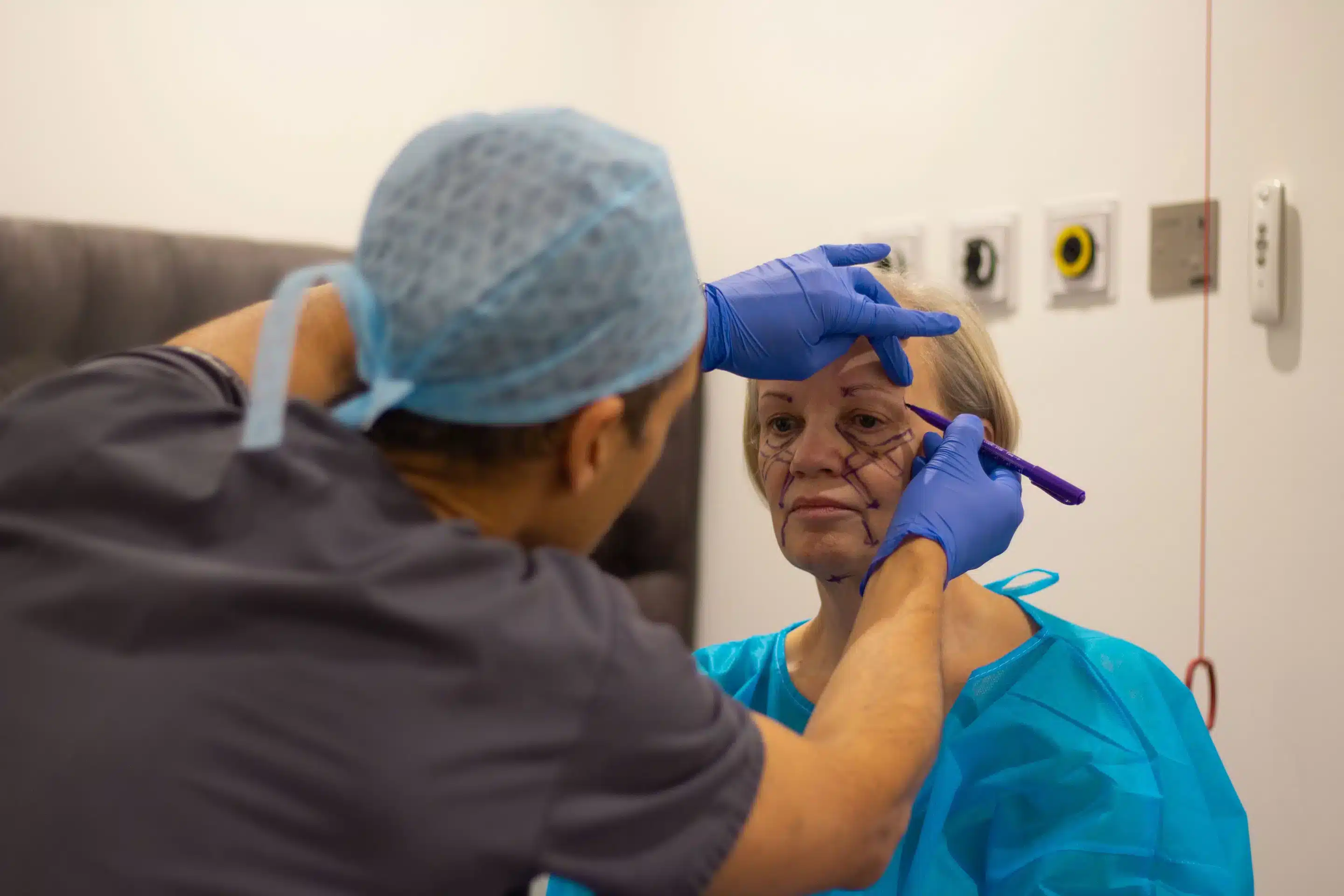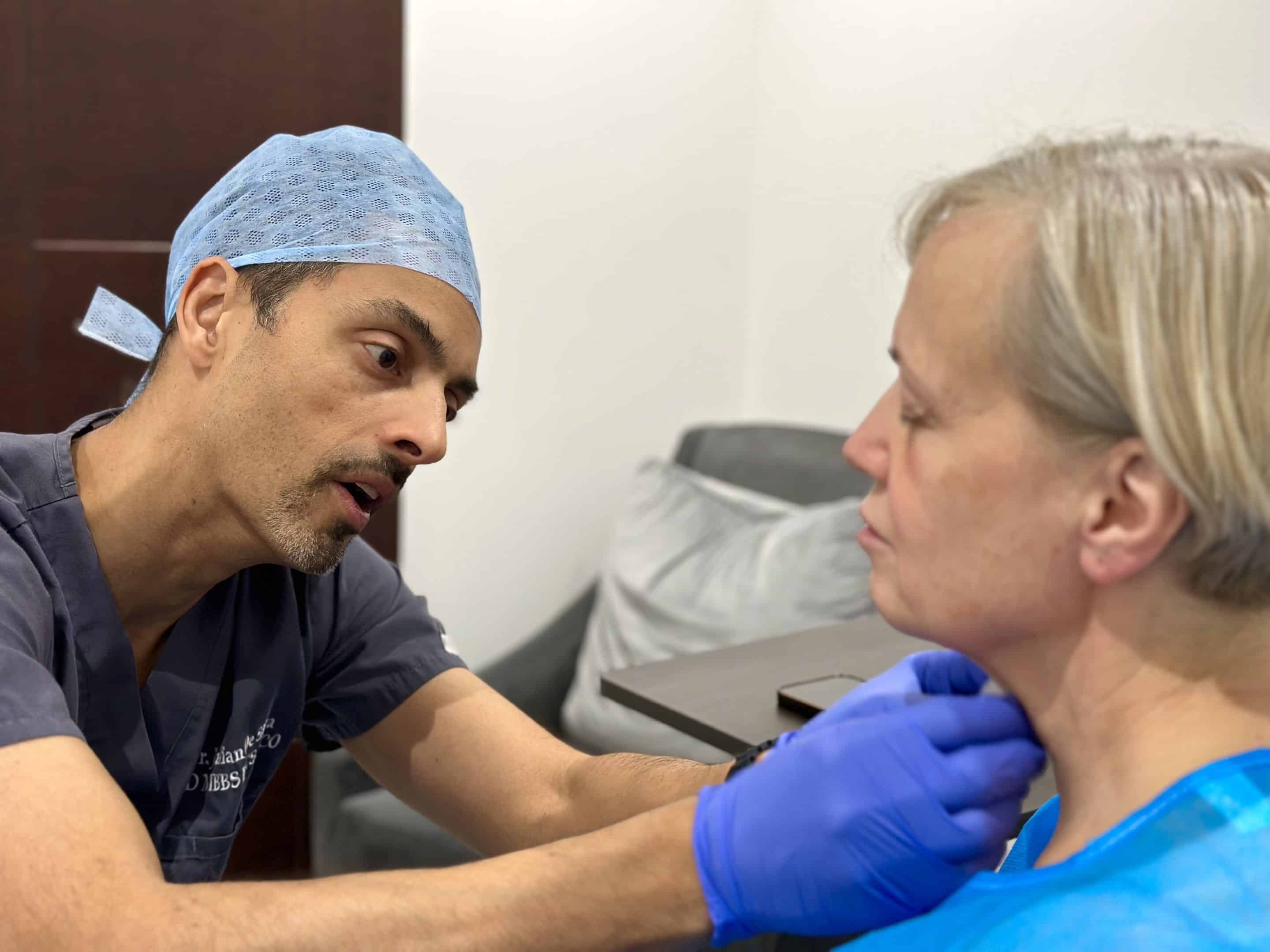The landscape of facial scars is vast and varied. Factors such as burns, trauma, acne, and previous surgeries can lead to these scars. Notably, the deeper and more entrenched the scar, the more challenging it becomes to eradicate. Enter the domain of facial scar surgery.
Now, you might wonder, what’s the efficacy of facial scar surgery? Which scars can be eliminated by surgical intervention? Is surgery the ultimate scar solution?
In this piece, I will discuss the benefits of facial scar surgery for those with scarring, classify the scars that can be treated by surgical correction, and emphasise why surgical intervention stands out as the superior scar treatment.
Treatments for Scar on the Face
Treatments for scar on the face include chemical peels and surgery.
Various methods exist to address facial scars, each with varying degrees of efficacy.
The pinnacle of scar treatments? Undoubtedly, surgical scar correction.
Before we delve deep into the intricacies of surgical scar treatment, let’s be familiar with some prevalent scar management techniques:
1. Dermabrasion
Dermabrasion is frequently used to address scars on the face. It is usually performed by a dermatologist using a wire brush or a wheel.
This process exfoliates the top layer of your skin, making it a skin-resurfacing procedure. Right after a dermabrasion session, the treated skin will become reddish.
Then, the skin will grow back and become smoother.
2. Chemical Peels
Chemical peeling is an effective treatment for mild scars. As its name suggests, the procedure uses chemical peels that contain mild acids.
A cosmetic practitioner applies a single layer of the chemical solution on the skin. As a result, the epidermis of the upper layer of skin gets exfoliated, exposing a new layer of skin.
There are three main kinds of chemical peels:
● Deep Peel
A deep peel involves phenol. It is the most popular type of chemical peel used for scars because it deeply settles into the skin. Since deep peels are intense, your skin will take up to three weeks to heal.
● Superficial Peel
A superficial peel has milder effects. It can help improve discoloration linked to mild scars.
● Medium Peel
A medium peel usually involves glycolic acid. While also used for discoloration, this type of chemical peel is frequently used as an anti-ageing treatment.
3. Laser Resurfacing
Laser resurfacing can help improve the appearance of mild scars.
Laser resurfacing has the same goal as dermabrasion and chemical peeling― to remove the top layer of skin. Unlike dermabrasion and chemical peeling, laser resurfacing uses laser beams to remove the top layer of the skin.
There are two types: erbium and CO2 laser resurfacing. While erbium is the safest and often less painful method for your face, carbon dioxide laser resurfacing appears to be more effective in treating scars.
4. Home Remedies
While not technically a treatment, I included remedies here because some people prefer to use them. In addition, they can be used to provide relief right after you contract a scar. They can also help during the healing process.
Here are some options:
● Petroleum Jelly
Petroleum jelly can be beneficial during and after the healing process.
This substance is known for protecting minor burns and cuts by creating a protective barrier on the skin’s surface. The barrier helps lock in moisture to help protect your skin as it heals.
In addition, this helps decrease the dryness of scarred skin, improving the appearance of scars.
● Honey
Honey can help decrease redness and infections. Scientists have also found some evidence suggesting that honey can promote wound healing.
● Over-the-Counter Cream, Gel, or Sheeting
You can also use over-the-counter medicated creams, gels, and sheetings to help improve the appearance of your scars and wound healing.
For instance, an antihistamine cream can help with scar sensitivity.
Silicone gels or sheetings can also improve the appearance of your scars, according to some research. They can also relieve discomfort and itching.
5. Facial Scar Removal Surgery
Scar removal surgery is the ultimate treatment for scars.
Unlike the treatments mentioned above, surgery is the only way to totally remove scars. During this process, a cosmetic surgeon removes the scar tissue.
Depending on your goals, needs, and the severity of the scar, your surgeon may remove the epidermis or the scar and even move the scar.
Unlike the options mentioned above, you may need to see a plastic surgeon instead of a dermatologist for this procedure. Remember to find the best plastic surgeon that suits your needs and goals.
Types of Scars Surgery Removes
Facial scar removal surgery can remove all types of scars.
Here are the different types of scars surgery can remove:
1. Normal Scars
The most common scars produced by the body’s healing process, normal scars usually do not become large. They also eventually fade and flatten.
Minor wounds (e.g. cuts, slightly deep scratches) often produce normal scars. These scars leave marks in the form of raised lines at first. However, these lines gradually fade as long as they do not get infected.
Normal scars take up to two years to fade away. However, they do not completely disappear, as they leave marks or lines.
Moreover, normal fine-line scars caused by surgery or a wound may be itchy for a few months. On the upside, they flatten out and do not become painful as they heal.
2. Keloid Scars
An extremely aggressive healing process produces keloid scars.
Keloid scars are huge and raised. They come in pink, purple, or red colors and become darker than the surrounding skin. In some cases, keloid scars have the same color as the skin surrounding them.
While keloid scarring is commonly found on the head (mostly on the earlobes after having piercings), shoulders, neck, and upper chest, keloid scarring can take place anywhere on the body.
Keloid scars can start to appear after minor skin damage (e.g. piercing or acne). Then, the said scars spread beyond the damaged area.
While anyone can get keloid scars, people with dark skin (e.g. African Americans, African-Carribeans, South Indians) have higher chances of getting keloid scars.
3. Hypertrophic Scars
Hypertrophic scars are a result of excess collagen that built up in the area where the wound developed. They usually develop one to two months after the post traumatic event.
More often than not, hypertrophic scars come in pink or red colors. While commonly developing in areas with tight skin, hypertrophic scars can appear anywhere in the body.
Hypertrophic scars also do not go beyond the damaged area and can partially fade over time.
4. Contracture Scars
Contracture scars are burn scars. Since burns are painful, contracture scars become as painful.
Therefore, if your skin was burned, you will most likely have contracture scars.
In particular, contracture scars cause your skin to tighten. They also become extremely sensitive. Consequently, these scars lead to aesthetic and functional issues.
For one, contracture scars can negatively affect your movement. Contracture scars on body parts you always use to move (e.g. joints) can be painful, therefore, limiting your movement.
In addition, these scars leave marks that appear wrinkly. They also come in pink and red colors. When contracture scars develop on your face, they can heavily change your appearance.
5. Pitted Scars
Medical skin conditions such as chickenpox and acne produce pitted scars. In some cases, loss of underlying fat or injury can cause pitted scars.
Also known as ice pick or atrophic scars, pitted scars look sunken. As a result, this type of scar becomes a cosmetic problem for several people.
While the appearance of pitted scars can improve over time, they might not completely disappear. Thus, you need to have surgery if you want to completely eliminate them.
FAQs about Scar Removal
Facial scar removal surgery produces quick, permanent results.
Here are the most frequently asked questions about facial scars removal surgery:
1. How long do the effects of scar removal surgery last?
The final results of a scar removal surgery last for a long period of time. However, it may take many months for the final results to appear. In some cases, it may take almost a year for the scar to totally heal and fade.
2. How long does the procedure last?
There is no universal answer to this question. Several factors affect the duration of a scar removal surgery.
The location, size, and severity of your scar affect the length of the surgery. In most cases, a scar removal procedure can be performed within one to two hours.
However, if the scar is huge and severe, scar removal surgery will likely take longer.
The presence of other procedures such as a facelift or neck lift.
Facial scar removal surgery can be done with complementary procedures.
3. What are the risks involved?
Just like any type of surgery, scar removal surgery comes with risks. During your pre-operative consultation, your cosmetic surgeon will explain the risks to you.
Risks of scar removal surgery include:
- Numbness
- Skin sensation changes
- Pain
- Swelling
- Discolouration
- Anesthesia risks
- Bleeding
- Infections
4. How much does scar removal surgery in the UK cost?
The price of scar removal surgery in the UK depends on several factors. These include the severity & size of the scar, consultation fees, type of facility, location, and the doctor’s fees.
Scar removal surgery can cost £500 to £2,000, depending on the factors mentioned. In some cases, the cost can go beyond the said range,
5. How do you choose the right cosmetic surgeon for scar removal?
Here are the things you need to consider when choosing a cosmetic surgeon for scar removal:
● Board Certification
If the surgeon is board-certified, he or she is qualified to perform scar removal surgery.
● Surgeon’s Approach
Review the surgeon’s gallery of before and after photos to see the results he can deliver.
● Facility
You must ensure that the facility where you will be operated adheres to the highest standards of safety, cleanliness, and care.
● Trustworthiness
Find a surgeon that you can completely trust. Once you do, you will feel more confident discussing your goals and getting into surgery.
● Honesty
The best cosmetic surgeons will give you honest, clear explanations of your options and the results you can expect.
You must consider many factors before getting facial scar removal surgery.
6. What are the benefits of scar removal surgery?
Here are the top benefits of scar removal surgery:
● Quick Treatment
If you are looking for a treatment that won’t take years to produce results, surgery is the best option for you.
● Cost-Effective
Paying for creams and gels costs more over the years compared to the one-time fee for surgery. Creams and gels also waste your time. Thus, getting surgery saves time.
● Permanent Results
Scar removal surgery produces permanent results. Unlike non-surgical treatments, you won’t need to have the procedures again to maintain your scar-free appearance.
● Improves Movement
Some scars affect the movement of people who have them. Removing scars through surgery lets you move freely again.
Conclusion
Stop wasting time and money on creams and other over-the-counter products. Completely get rid of disturbing scars through surgery. If you want to get rid of your scars as soon as possible, book a consultation with me now!



